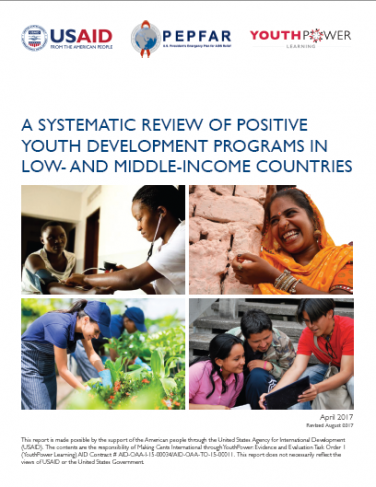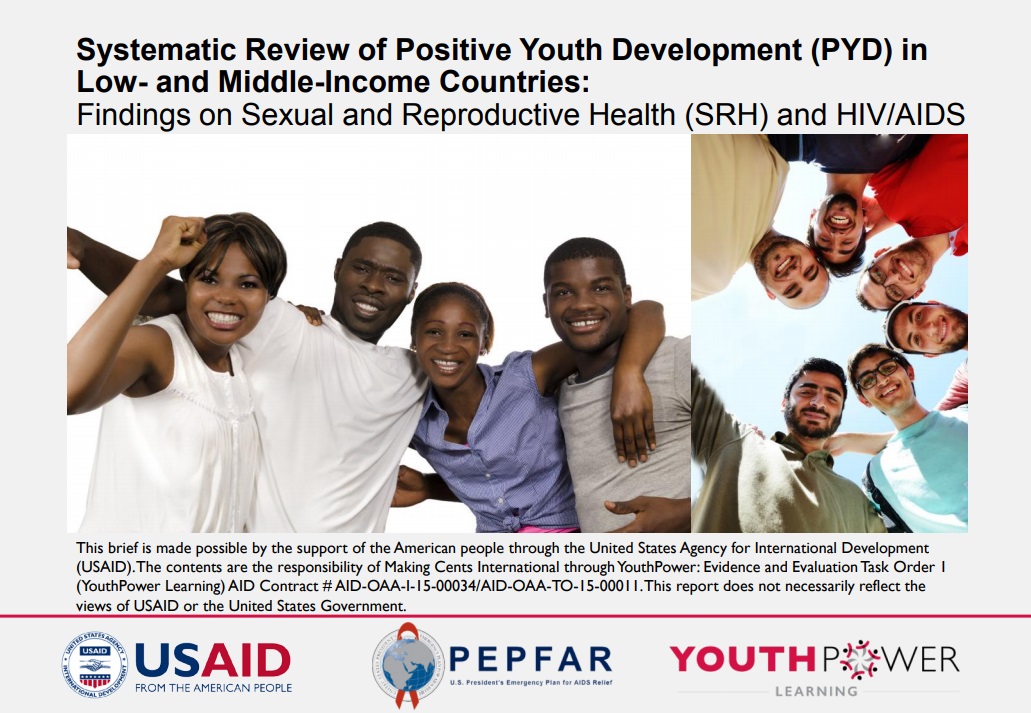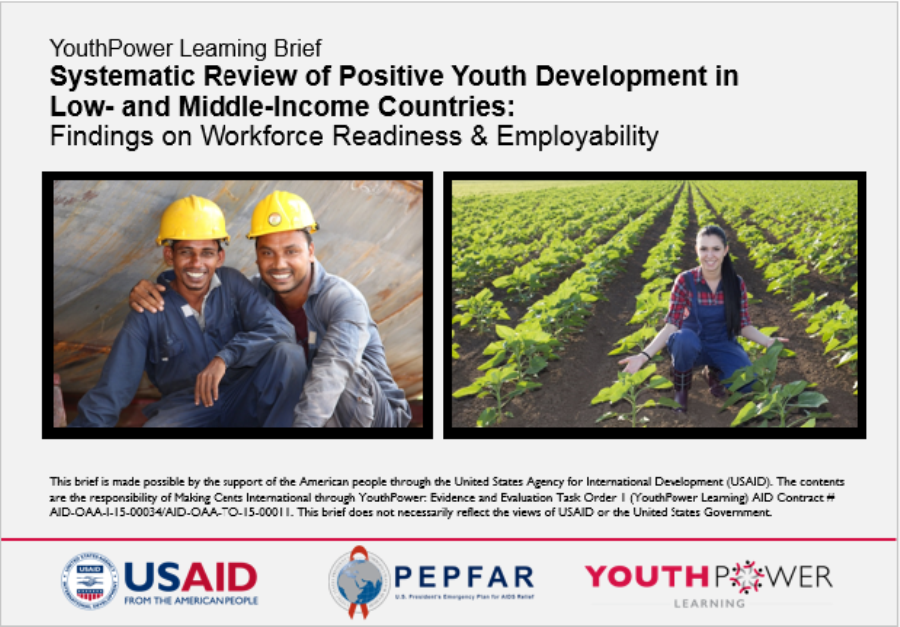Systematic Review of Positive Youth Development in Low- and Middle-Income Countries

YouthPower Learning is pleased to share the results of a rigorous analysis of existing evidence of positive youth development (PYD) in low- and middle-income countries (LMICs).
What does the Systematic Review provide?
• A comprehensive framework to understanding PYD in LMICs
• Findings of how PYD has been implemented and areas in need of further investigation
• The latest evidence of what works in achieving positive youth-focused outcomes in LMICs
• Lessons learned that international implementing organizations can integrate into practice
• Recommendations to inform future program design, implementation, and evaluation efforts
Methodology
The systematic review drew upon peer-reviewed and grey literature published in English, Spanish, and French after 1989. Using a systematic search strategy for peer-reviewed papers, a purposive search in repositories and a survey disseminated to youth-serving organizations, development agencies, and universities, we identified 21,576 peer-reviewed papers and 3,705 grey literature documents. These reports and papers were screened in a three-step process to select the final documents to be included in the data extraction. The 108 (44 peer reviewed literature, 64 grey literature) documents included in the meta-review are all based on evaluations of programs that either the authors or the review team classified as PYD. We considered programs to be “PYD” if they engaged young people (10-29 years of age) and incorporated at least two outcomes within the PYD framework. The quality of the evidence presented in papers was assessed by reviewing their respective research design, measures, and analysis. One-third of all papers reported results from randomized controlled trials (RCTs). The review also included papers reporting other research designs, such as quasi-experimental, pre-post non-experimental, mixed methods, qualitative, and post-test quantitative or qualitative designs.
How can I access the Systematic Review?
The Systematic Review is available for download on YouthPower.org.
Briefs from the Systematic Review:
* Findings on Democracy, Human Rights and Governance
* Findings on Sexual and Reproductive Health (SRH) and HIV/AIDS
* Findings on Workforce Readiness & Employability
PYD Infographics:
1. What is Positive Youth Development
3. Positive Youth Development Programs
Poster
* Designing a "Non-Academic" Systematic to Review to Better Design Youth Interventions
* The Evolution of Positive Youth Development as a Key International Development Approach
Further Research
.jpg)
This YouthPower Learning Brief summarizes findings from the YouthPower Learning Systematic Review of PYD Programs in LMICs relevant to Democracy, Human Rights, and Governance (DHRG). It also leverages insights from the YouthPower Learning PYD Measurement Toolkit.
- Most programs classified as DHRG also work towards outcomes in other sectors.
- All DHRG programs focus on building youth assets, including vocational and soft skills.
- Several programs reported positive outcomes relevant to DHRG as well as health and gender equity related outcomes.
- Overall, DHRG programs lack rigorous evidence and conclusive data about what works.

This YouthPower Learning Brief summarizes findings from the YouthPower Learning Systematic Review of PYD Programs in LMICs relevant to programming for SRH and HIV/AIDS. It also leverages insights from the YouthPower Learning PYD Measurement Toolkit . International implementing organizations can integrate lessons learned into practice as researchers continue to build knowledge on the impacts of PYD programs.
- About half of the 108 studies (51%) of PYD programs identified by the systematic review focused on SRH and HIV/AIDS outcomes.
- Most programs classified as investigating SRH and HIV/AIDS outcomes also worked towards outcomes in other sectors.
- SRH and HIV/AIDS programs targeted more than one type of PYD domain
- PYD programs impacted a variety of SRH and HIV/AIDS-related outcomes. These included increasing self-efficacy to use condoms with partners, contraceptive use, and utilization of SRH services.
- SRH and HIV/AIDS programs strengthen PYD constructs
- There were no studies within the systematic review that had programs that targeted youth with disabilities or LGBTI youth.

This YouthPower Learning Brief summarizes the findings from the YouthPower Learning Systematic Review of PYD Programs in LMICs that are relevant to Workforce Readiness and Employability (WR&E). It also leverages relevant insights from the YouthPower Learning PYD Measurement Toolkit.
Some of the main findings are:
- Most programs classified as focused on WR&E also work towards outcomes in other sectors.
- WR&E programs focus on building youth assets.
- Several programs that addressed WR&E reported positive outcomes relevant to that sector.
- Overall, most WR&E programs lack rigorous evidence.
